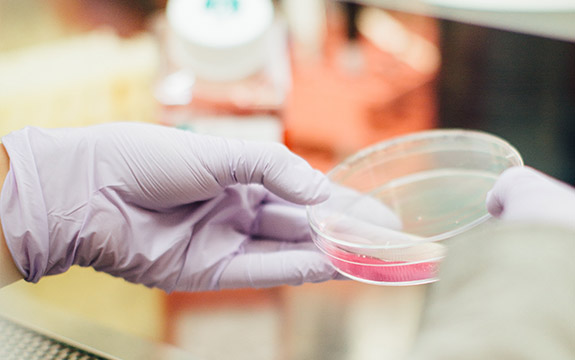Swinburne research is transforming vaginal and reproductive health

In Summary
- Swinburne research team developing intervaginal ring to enhance bacterial health
- Research is part of a larger project aimed at understanding the impact of the microbiome on vaginal health
- Medical Research Future Fund has bestowed the larger project $895,346 in funding
A unique intervaginal ring (IVR) in development by a Swinburne research team aims to enhance vaginal health and reduce instances of the common vaginal health condition, bacterial vaginosis (BV).
Currently, diagnosing BV can be a difficult process due to the wide variety of symptoms it can cause, says research fellow Dr Simon Cook.
“Currently diagnosis of BV lacks precision and accuracy as the symptoms vary widely and depend on the perception of both patients and clinicians,” he says.
Those with BV can suffer from:
- Inflammation of the vaginal lining
- An increased risk of acquiring sexually transmitted infections
- Adverse reproductive health outcomes including miscarriage, pelvic inflammatory disease, preterm delivery, low birth weight, infertility, decrease in success of live births from in vitro fertilization (IVF)
Dr Cook says that BV is asymptomatic for as many as 50 per cent of women, however the associated risks remain the same.
Understanding microbiome
BV is defined as an imbalance of the microbiome in the vagina and the IVR is part of larger Swinburne research project examining the impact of the microbiome on vaginal health.
“The term ‘microbiome’ is the collective term for micro-organisms such as bacteria, viruses and fungi that live on or within our bodies,” says research fellow Dr Nina Eikelis
“Advances in analytic technologies have enabled scientists to show just how important the microbiome is in maintaining our health with recent studies showing that alterations in the vaginal microbiome may be associated with inflammation.”
Researchers from Swinburne’s Iverson Health Innovation Research Institute are working across the university and with external partners on developing the bespoke IVR device that will release agents to enhance the vaginal environment and microbiome.
Professor of Biomedical Engineering Simon Moulton says that, combined with other antimicrobial, antiviral drugs and contraceptives, the IVR may decrease genital inflammation and promote the presence of ‘optimal’ vaginal microbiota.
“Our current research gives us the potential to influence a range of health outcomes that could see revolutionary improvements made to female sexual and reproductive health,” says Professor Moulton.
Dr Eikelis says that given the global burden of BV there is a clear need to understand what represents an ‘optimal’ microbiome.
“This research project is aimed at characterising vaginal microbiome in healthy reproductive-age women,” she says.
“This is a crucial step which will provide the baseline that can then be used to determine when the optimal microbiome profile is shifted towards a negative microbial imbalance.”
This research project is centring women in the design process of the eventual IVR, says Dr Gianni Renda of Swinburne’s Centre for Design Innovation.
“We will utilise co-design methodologies to inform the design of our intervention and or prevention strategies and to pinpoint need by discussions with stakeholders.”
Federal funding awarded
The research, as part of the Enhancing the Vaginal Environment and Microbiome Initiative (EVE-M), was recently awarded $895,346 from the Federal Government, funded under Stage One of the Medical Research Future Fund (MRFF) Frontiers initiative. In addition to Swinburne, it involves researchers from Burnet Institute, Monash University/Melbourne Sexual Health Centre, Deakin University, Family Planning NSW, Eudaemon Technologies Pty Ltd and the Institute for Genome Sciences, University of Maryland.
The EVE-M initiative is focussed on developing and commercialising a series of pioneering technologies to promote a beneficial microbiota with a view of improving women’s sexual and reproductive health.

